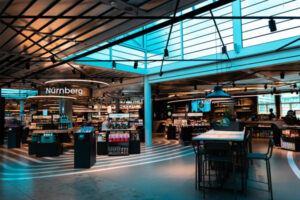PROPTECH COLUMN BY PETER TONSTAD
The first shopping center in the world was a covered shopping passage, the Passage du Caire, which opened in 1798 in Paris, France. The tenant mix was all about retail. Since then, the shopping cen[1]ter format has been on a path of continuous evolution, adapting to meet the latest consumer demands and taking market trends into account as far as possible.
Catchment Areas are Communities
Over the last 20 years, dramatic increases in property prices have put pressure on increasing the yield of retail real estate locations. The alternative value of use has become more evident, especially in city locations. Why not tear down your retail location and build and sell apartments for immediate returns, rather than hoping for 7% annual returns over the next 50 years? Especially since capital for investment in new developments has been virtually free.
An attractive middle ground has become mixed use, where the optimal combination of retail, food and beverage, services, entertainment, residential, office, and perhaps hotel is sought after. The combined developments give the property owners a hedge in all the aforementioned asset classes, and they simultaneously become much more attractive to the users and the local communities.
Yes, catchment areas are communities. It is brilliant how the industry is now embracing the term rather than talking about retail this or F&B that. The biggest industry association, ICSC, rebranded back in 2021 from “International Council of Shopping Centers” to “Innovative Commerce Serving Communities”. In a very clever way, they are re-positioning the entire industry to be relevant for the unforeseeable future.
“Communities” is also a much-used term when it comes to sustainability and is relevant in several of the United Nations Sustainable Development Goals, especially Goal 11, “Sustainable Cities and Communities”. As such, the whole approach to communities also gives property owners a nice opportunity to tick the required ESG boxes, as all businesses must do. In some cases, this might come across as greenwashing, but in many cases, the contributions to sustainable communities really make a difference.
Make Creating a Community Experience Scalable
As always, the Placewise purpose is all about developing digital solutions for our clients that make creating a community experience scalable through communication, connection, engagement, personalization, and inspiration. In part, community comes from a sense of belonging, of being understood, and from feeling rewarded. We create digital reach for our clients, allowing them to establish and maintain “personal” relationships with hundreds of thousands of customers in their respective catchment areas, which would be impossible without personalization and automation. In fact, in contrast to the old anonymous customer demographic group characteristics used to “understand” consumers in the past, digitalization allows centers to know their shoppers on a more individual level, which is essential for both maintaining relevance and establishing a community.
The headlines on the demise of physical retail due to e-commerce are more or less gone. Post-pandemic consumer behavior has proven that it is the combination people want. Who is in a better position to tie all of this together than the local shopping centers that are now being transformed into mixed-use properties?
Placewise clients, on average, convert 10% of their annual footfall to digital consumer relationships per year. Some of our best performing clients have more than 70% digital reach in their respective communities. That puts them way ahead of any individual retailer, local media offering, or social media in the same area. This digital reach gives property owners the opportunity to evolve their businesses and to stay relevant. They primarily use this reach to serve their tenants, which is a prerequisite for anything they do, but it also gives them an opportunity to directly engage with individuals in the community for events, charity activities, education, etc. Last, but not least, it provides an opportunity to solve many of the challenges related to e-commerce, such as unsustainable transport and waste from returns.
Pre-digital shopping centers never had the same opportunity to create such personal relationships, which now make everything more relevant and interesting for all parties. It gives property owners the opportunity to take the center spot of the community stage. However, that position also comes with a great deal of responsibility – a responsibility to create good for communities, with long-term perspectives. Combining community digital reach with fast-evolving mixed-use offerings offers endless opportunities to do just that.
Google used to say they would “do no evil”. Shopping centers have the opportunity to do better by their local communities, by simply “doing good”.







